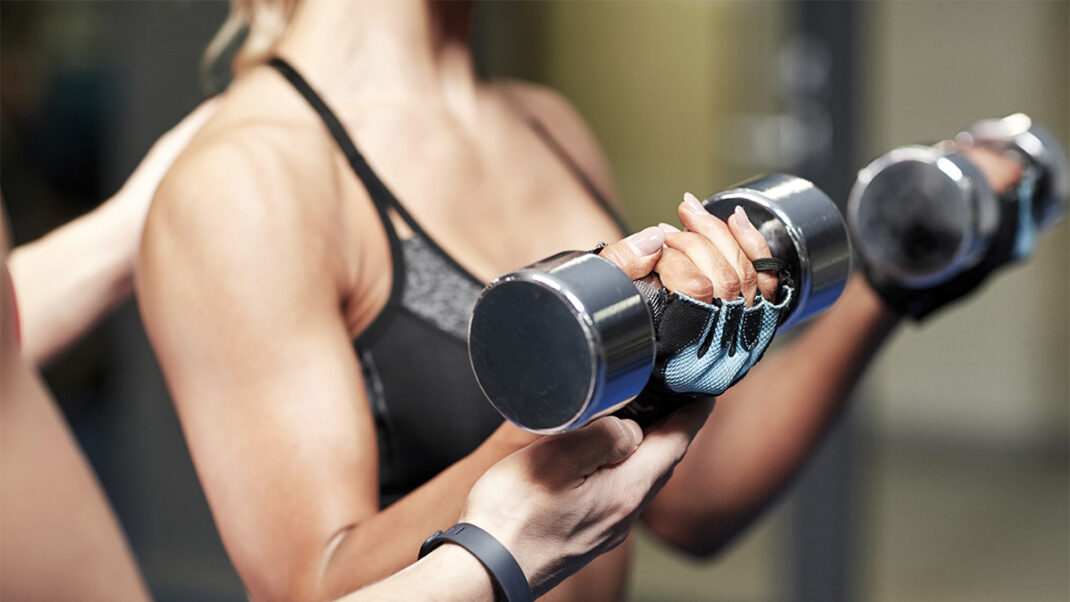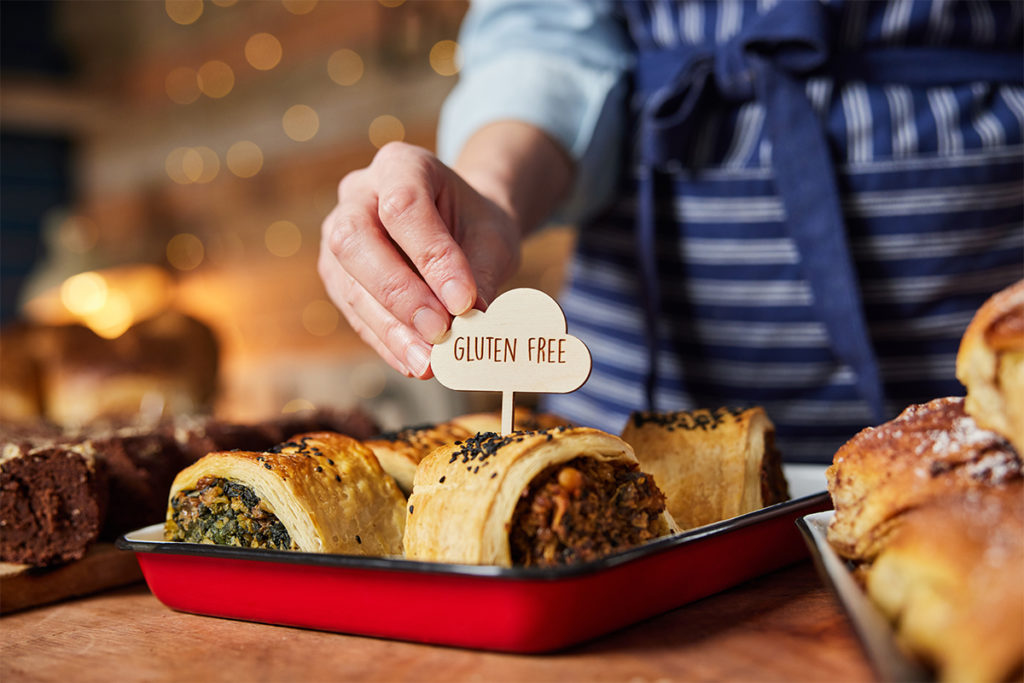Sponsored Content
The Bender Ball™: The Crunch-less Core
Enhancing Functional Movement and Core Strength with the Bender Ball™

Leslee Bender has been a leader in the fitness industry for over four decades and was a pioneer in creative functional training, even in the early years of its development. In 2000, while teaching in Germany, Leslee discovered a small ball that sparked a new approach to movement. She began introducing it to the traditionally classical Pilates community, where its impact was immediate. When students experienced the difference – performing exercises without compromising the low back or neck – the concept took off, launching the first small ball program under the name The Pilates Coach.
In 2006, Leslee met the owner of Savvier Fitness at the IDEA Conference. After he experienced the value of the small ball firsthand, a powerful partnership began – and the rest is history.
Leslee has been recognized with numerous accolades, including the 2020 IDEA Personal Trainer of the Year and the 2024 CanFitPro Specialty Presenter of the Year. She continues to dedicate her life to the industry, not only as an international lecturer but also by working with clients on a weekly basis.
History
- The development of the Bender Ball™ with Savvier and how it was awarded 2007 Fitness Short Form infomercial of the Year and the strategies of affordability and accessibility. Savvier as a fitness direct marketing company saw the potential of a small ball and the many uses for all levels of participants.
- The concept of using a small ball rather than a large ball was developed by Leslee Bender in 2000 for Pilates practitioners to protect the back during traditional Pilates exercises
- Leslee presented at conferences worldwide introducing a functionally safer approach to many traditional exercises utilizing the mini ball
- In 2006 Savvier and Leslee Bender collaborated and, developed the Bender method of core training
- In 2007 awarded fitness commercial of the year
- It has since then been utilized by consumers and fitness professionals worldwide
Using the Bender Ball™ enhances each exercise while providing critical support and protection for the spine. Crunches are a thing of the past – we now understand far more about authentic human movement. Yet, for some reason, many still lie on their backs, straining their necks in pursuit of the “perfect” abs. It’s counterproductive to rely solely on supine positions for core training when there are countless other movement patterns and body positions that engage the entire kinetic chain more effectively.
Consider this: if you were to throw a ball, your body would naturally step back, extend and rotate through the hips and spine. This is an intuitive response – your body subconsciously moves in relationship with gravity to complete the task. During this process, fascia transmits energy while muscles generate force.
Unlike generic props, this small but powerful tool was developed with purpose – to protect the spine, activate deep stabilizing muscles and reduce the risk of injury. When used as intended, the Bender Ball™ not only helps reduce back pain but also improves true core strength and movement control. This is core training evolved – smarter, safer and far more functional.
Science and research behind the Bender Ball™
In 2007 The Journal of Applied Research under the direction of Dr Petrofsky at the Department of Physical Therapy at Loma Linda University and Azusa Pacific University conducted a study using electromyography (EMG) with a mini stability ball now known as the Bender Ball™. 10 subjects were tested for the activation of the core with a small ball, Swiss ball and floor crunches.
Results:
- 50% more activation on the large ball than crunches but with having to balance added more
- Largest % of activation with the small ball behind the low back creating significant extension thus recruiting more fibers of the rectus abdominals and obliques
- Repetitive crunches on the floor are known to have a low % of recruitment of the core muscles and create back injuries costing millions in workers compensation
Conclusion: the small ball muscle recruitment, specifically the rectus abdominals and obliques, was a large % over floor crunches. The greatest difference was the 50-90 degrees of extension and flexion moving the lumbar spine authentically with protection of the back.
Myths and Misconceptions of Core Training
- Myth: Crunches give you a six pack. Reality: Genetics, diet, proper core training, sleep, hydration and age have greater impact.
- Myth: I can isolate my lower abs. Reality: the hip flexors are being utilized approximately 48% and the transverse approximately 11% (Stuart McGill Back Care and Performance )
- Myth: I can isolate my core by sucking in my stomach and squeezing my glutes and holding it. Reality: tucking the pelvis only perpetuates low back pain and restricts all normal movements compromising all the joints in the body. The hips being part of the core, are the most powerful engine in the body therefore by restricting their ability to move is useless (try throwing a ball or even walking while squeezing the glutes)
Benefits of using the Bender Ball™
- Physical Benefits: Allows for specific changes in core strength and functionality
- Physiological Benefits: Allows for specific adaptations required by placing stimulus creating change
- Behavioral Benefits: Allows for every participant to feel successful without ever compromising safety while performing a specific exercise
Bridging Conscious Training to Subconscious Movement Patterns
As fitness professionals, one of our greatest responsibilities is helping clients transition from conscious movement to subconscious efficiency. When we guide students through functional movement patterns, it’s not just about physical execution – it’s about helping them understand why each movement matters. This cognitive connection lays the foundation for motor learning that eventually becomes automatic, much like driving a car or, conversely, sitting with poor posture at a desk.
To support this learning process, it’s essential to give each student the space to internalize exercises in their own way. Learning is highly individualized and when posture and alignment are reinforced consistently, the neuromuscular system begins to rewire. Over time, clients adopt these healthier patterns subconsciously – a shift that can significantly improve overall wellbeing.
Understanding Learning Styles to Enhance Movement Mastery
Recognizing and adapting to different learning styles is essential for maximizing student success in any fitness setting. Whether working with individuals or groups, tailoring your approach based on how each person absorbs and applies movement cues can make a significant impact.
- Kinesthetic Learners thrive with tactile feedback and hands-on correction
- Auditory Learners respond best to clear, concise verbal instructions
- Visual Learners need to observe a movement before attempting it themselves and demonstrations are essential for this group
The Critical Role of Fascia in Functional Movement
Fascia is one of the most vital yet often overlooked systems in the body when it comes to mobility, stability, agility, balance and resilience. This intricate network of connective tissue lies beneath the skin, wrapping around and integrating with muscles, bones, organs, blood vessels and nerves. Far from being just structural, fascia plays an active role in movement and sensation, thanks to its rich supply of nerve endings.
Supporting fascia health is not just about flexibility – it’s foundational for optimal function, longevity and performance.
Achieving Neutral Spine
A neutral spine is the position in which every joint is optimally aligned and supported by connective tissue, allowing movement to be executed with the least amount of effort. It is the position the spine was designed to maintain. Therefore, tucking, squeezing and otherwise compromising the spine places unnecessary strain on surrounding joints and disrupts natural movement mechanics.
Incorporating a small ball into exercises offers several key benefits:
- Provides kinesthetic feedback essential for kinesthetic learners who rely on tactile cues for proper alignment
- Promotes correct alignment in all movement patterns
- Reduces overuse of the hip flexors during seated exercises
- Enhances anterior core engagement by encouraging lengthening against gravity, rather than promoting shortening and compression
The Power of Breath
Breath is essential – not only for life but for movement efficiency. Inhalation delivers oxygen to the bloodstream, while exhalation removes carbon dioxide. Though automatic, breathing patterns can greatly impact physical and emotional wellbeing.
Improper breathing may disrupt oxygen exchange, contributing to fatigue, anxiety and reduced performance.
During exercise, inhale to prepare and exhale during exertion. This pattern supports strength, stability and flexibility. Typically, inhaling through the nose and exhaling through the mouth is recommended. When holding a position, breathe normally to avoid tension and maintain control.
Effective breath cueing enhances movement quality and reinforces the mind-body connection.
Become an Exceptional Trainer with Intelligent Language
- Use intelligent, purposeful language
- Observe the individual
- Coach – don’t perform
- Teach the “why,” not just the “how”
- Maintain visual connection
- Foster a positive environment
- Reinforce what’s done well
- Know your scope
- Avoid contraindicated exercises
- Master the art of cueing and connection
Do’s
- When placing and using the ball for kinesthetic feedback, make sure to have it in the correct area of the body for best results
- Maintain neutral spine when utilizing the ball
- Use the ball as a useful prop not as a toy
- Use the ball to maintain proper body alignment
Don’ts
- Squeeze the ball in any exercise causing muscles to cramp
- Stand on the ball
- Put full body weight on the ball
- Use the ball as a silly toy
Practical Applications in Movement
Vertical movements are a foundational component of functional training, challenging the body to move efficiently against gravity while improving balance, coordination, and proprioception. When integrated with the Bender Ball™, these exercises provide tactile feedback that helps reinforce correct alignment, activate stabilizing muscles, and build greater body awareness. The following vertical movement variations demonstrate how this simple tool can enhance strength and stability while protecting the joints and spine.
Vertical movements are beneficial for balance and body awareness:
Squat
- Begin by standing with feet hip distance apart with the ball in between the thighs, just above the knees.
- Cue: Make sure to only squat as low as you feel glutes and hamstrings engage. Do not squeeze the ball – instead aim for light contact to engage inner thighs.
- Purpose: To align the knees and hips correctly.
Lunge
- Begin holding the ball in front of the body with the left hip flexed and the right extended in a hinged position. Next, place the ball in between the ribs and left thigh.
- Cue: Make sure to hinge forward and focus on the left glute and hamstring. Rock slightly forward and back while extending the arms or in front of the body.
- Purpose: To engage the glutes and hamstrings in a hinged neutral spine. Variation for balance lift the right foot off of the floor.
Balance one foot on the ball
- Begin by placing the ball under the left foot with slight pressure.
- Cue: Make sure to only slightly press the foot into the ball while focusing on lifting through the supporting side. Hold for a few seconds before alternating sides.
- Purpose: To focus on balance variation, rotate to the same side for a balance challenge.
Curtsy Lunge
- Begin with the feet slightly wider than the hips while holding the ball in front of the chest. Next cross the right foot behind the left and hinge forward while reaching the ball towards the left knee.
- Cue: Rotate the spine and hinge at the hips, while gazing up towards the left hand.
- Purpose: Torotate the hips and spine to engage and lengthen the glutes.
- Variation: Place the ball between the chest and thigh for stabilization.
Prone movements strengthen the shoulders and the body’s core. The ball provides a useful prop to enhance stability:
Hands and knees hip extended
- Begin on the hands and knees with the right hand on the ball and hip extended.
- Cue: Make sure when you extend the hip when lifting and lowering you do not lift any higher than the hips, keeping them parallel while maintaining a neutral spine. Repeat on the left.
- Purpose: By creating an unstable surface it is a greater challenge to the core body.
Hands and knees with one knee on ball
- Begin on the hands and knees with the right knee on the ball.
- Cue: Make sure the right toes are secured on the floor and the spine is neutral.
- Purpose: By creating an unstable surface it is a greater challenge to the core.
Forearm Plank
- Begin on the forearm with the ball under the chest and knees resting on the mat.
- Cue: Lift one knee at a time to a full plank.
- Purpose: By having the ball under the chest it helps to align the body and provide kinesthetic feedback.
- Progression: Alternating hip extension.
Side lying movements utilizing the ball provides full lateral flexion and extension which cannot be achieved supine:
Side Lying
- Begin with the ball between the right side ribs and hip supporting the head.
- Cue: Make sure to always support the head and place the left hand on the mat in front of the body to assist while laterally flexing the spine.
- Purpose: To strengthen the lateral core in a full range of supported motion utilizing the ball. Repeat on the other side of the body.
- Progression: Lift the left hand off of the mat and to the side of the body.
Seated movements with the ball provide low back support while targeting the anterior core body which otherwise cannot be achieved:
Seated Anterior Core
- Begin in a seated position with the ball wedged behind the low back and hands on the thighs.
- Cue: Lift one arm at a time. Gaze upward and lift the arms until the front of the body engages.
- Purpose: To support the low back while strengthening the anterior core.
Seated Core with Rotation
- Begin in a seated position with the ball wedged behind the low back.
- Cue: Make sure that when you rotate to look in the direction you are moving.
- Purpose: To support the low back while strengthening the anterior and lateral core.
- Variation: Bring the hands together.
.
References
Petrofsky, Jerrold S., Jennifer Batt, Nicceta Davis, Everett Lohman, Michael Laymon, Gerson
E. De Leon, Heidi Roark, et al. 2007. “Core Muscle Activity During Exercise on a Mini Sta- bility Ball Compared With Abdominal Crunches on the Floor and on a Swiss Ball.” Journal of Applied Research 7, no. 3: 255-272. http://jarcet.com/articles/Vol7Iss3/PetrofskyVol7No3.pdf.
Julia, Nina. 2023. “Chronic Back Pain Statistics in the US.” Last modified January 11, 2024. https:// cfah.org/back-pain-statistics/.
McGill, Stuart. 2002. Low Back Disorders. Champaign, IL: Human Kinetics.





